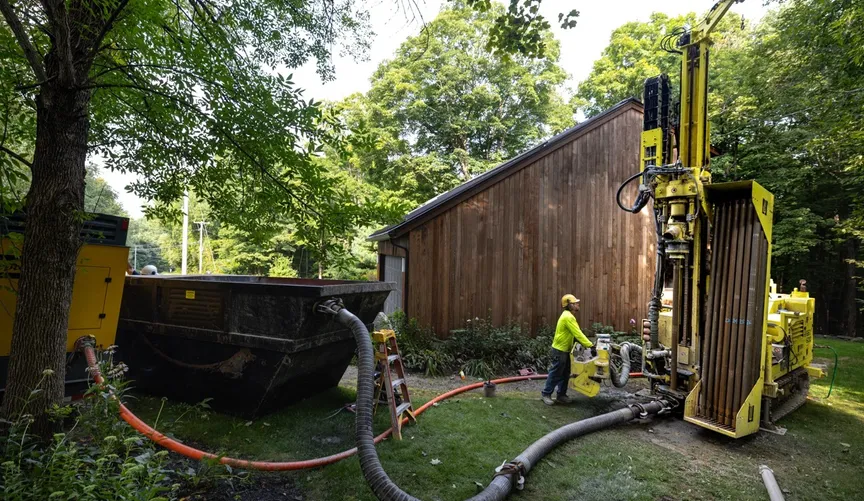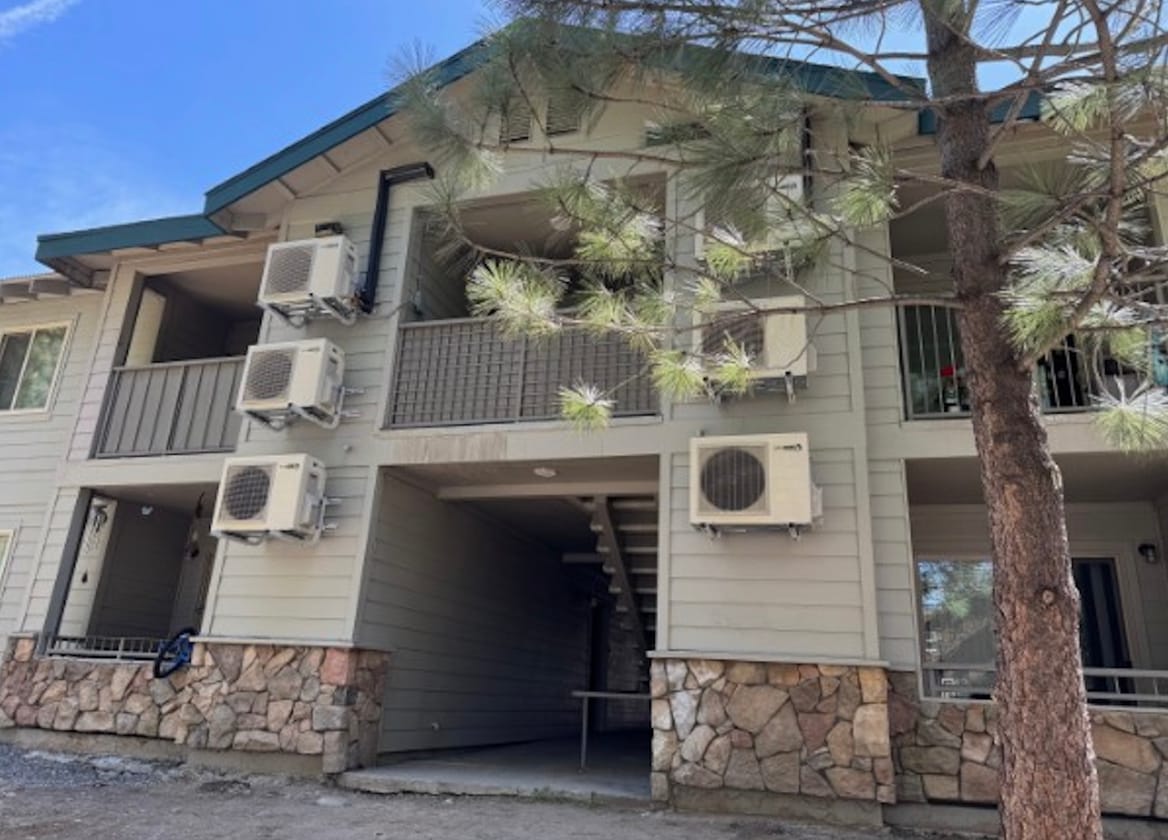
President Donald Trump’s megalaw will soon slam the door on tax credits for homeowners who want to install heat pumps or make other energy-efficiency improvements.
But there’s still one way to tap federal assistance for cleaner heating.
The same law allows installers of geothermal heat pumps and systems that store thermal energy for later use to earn tax credits for years to come. Though individuals can’t tap the incentives directly, companies that retain ownership of the systems can lease them to customers at a cost that reflects the federal discount of 30% to 50%.
Already, some companies are adapting to the new state of play. Installers that didn’t previously have a leasing business are pivoting to take advantage of the incentives. For firms that already deploy thermal energy storage systems in multifamily buildings via commercial partners, the transition is especially straightforward.
It’s a rare and under-the-radar bright spot for home electrification in the One Big Beautiful Bill Act (OBBBA). The law is otherwise expected to slow down the shift from fossil-fueled buildings to heat pumps, which improve air quality and can save consumers money on top of reducing carbon emissions. But the pathway available to companies that lease geothermal and other clean-heat systems could help soften the blow.
Take Dandelion Energy, a startup specializing in home geothermal heat pumps that pull warmth from the ground rather than the air. Already, the firm has launched a leasing structure to take advantage of the changes.
If anything, the new law has made Dandelion’s approach to earning tax credits simpler, said CEO Dan Yates. That’s because the Google X spinout has in the past few years “focused on working with large-scale new homebuilders, where we do hundreds, even thousands of homes in new projects,” like its sizable partnership with homebuilder Lennar in Colorado.
Homebuilders didn’t have a clear way to capture the value of geothermal heat pumps under the Section 25D tax-credit program that’s going away at the end of this year, Yates explained. That tax credit was for households, not for companies that build homes with the eligible technology.
But under Dandelion’s new leasing structure, homebuilders can capture the baseline 30% tax credit, plus a 10% adder under domestic-content provisions that Dandelion’s U.S.-built systems qualify for. That enables them to save “thousands of dollars” up front, Yates said. “In many states, we’re seeing this lease as a real tipping point, where geothermal becomes less expensive than the status quo for the builders.”
The changes in the OBBBA also solved a key problem for third-party ownership of geothermal heat pumps, he said. Under previous tax-code language, those systems were considered “limited-use property,” meaning that the commercial owner couldn’t repossess them if the leaseholder failed to make payments, which complicated leasing structures.
But the Geothermal Exchange Organization, a geothermal-heat-pump trade group, successfully lobbied to change that language with the OBBBA. Now, leased geothermal systems can enjoy the same tax credits that have helped boost larger projects such as geothermal district-heating networks, which supply ground-source heat to buildings, campuses, or entire neighborhoods.
Dandelion’s leasing partner is Upstream Lease, a division of Carbon Solutions Group, which has previously specialized in monetizing tax credits for distributed energy systems like rooftop solar. Third-party lease and power purchase agreements make up roughly half of the U.S. residential rooftop-solar market to date, and remain available, at least in a truncated form, under the OBBBA.
Keith Martin, an attorney with law firm Norton Rose Fulbright and an expert on clean-energy tax equity, said his firm is working on geothermal-heat-pump leasing and tax-credit monetization strategies similar to those undertaken by Dandelion and Upstream, though he declined to name the companies involved.
“They’re looking at retaining ownership, just like the solar rooftop companies do, and then packaging large groups of heat pumps and arranging tax equity as a way of monetizing the tax benefits,” he said.
Companies can continue to claim geothermal-heat-pump tax credits for projects that start as late as 2034, Martin said.
As for the cost to homeowners, Yates said the typical payments add up to $150 to $200 per year, a “tiny” amount compared to typical rooftop-solar lease payments that can be as much every month. And the superefficient nature of ground-source geothermal can cut a home’s energy bills by $500 to $900 per year, or two to four times as much as they’re paying for a system that can last decades.
“That’s what we love about this — it really does align everybody’s interests,” he said.
The other class of household heating and cooling equipment that received a reprieve from Republicans in the OBBBA is thermal energy storage systems. The term typically describes large-scale systems that use energy to generate heat or cold, which is stored for later use — a class of technologies that range from industrial-scale heat batteries to massive chilled-liquid networks connected to multiple buildings.
But homes and apartments can also benefit from smaller-scale versions of these systems, which are eligible for full tax credits until 2033 and then for gradually reduced tax credits through 2035 under the OBBBA.
For Jane Melia, co-founder and chief revenue officer of Harvest Thermal, that opens up opportunities.
Her company makes the Harvest Pod, a device that uses a heat pump to warm both water and air, and also stores that heated water for later use. That allows households to use electricity when it’s cheap and plentiful to heat water, which can be tapped later when power prices are higher. Under the OBBBA, devices that can store enough energy to heat and cool a building for at least one hour qualify for tax credits.
Of course, those tax credits are also only available to companies, not consumers, under Section 48E of the tax code, she said. But lease structures for household heating, ventilation, and air-conditioning systems are relatively common, she said. “If they’re willing to lease the HVAC equipment, then the leaseholder captures the tax credit, and it flows through to making the lease payment lower than it would otherwise be.”
For single-family homes, “that’s something we’re actively working on to get it in place in 2026,” she said. “It’s not done yet. But I think that’s where the industry is going.”
Multifamily buildings are even better suited to capture tax credits for third-party-owned thermal storage systems, since the owners of properties are stand-ins for commercial leaseholders. In fact, Harvest Thermal has already seen some of its devices capture the 48E tax credit in a multifamily project in Truckee, California, a mountain town where efficient electric heating with storage can make a significant dent in energy costs.
“This project would not have happened without the tax credits,” said David Chanin, cofounder of FutureFit Partners, the company that managed the installation of eight Harvest Pods in a 72-unit low-income housing site in Truckee. The owner of the building was able to reimburse 40% of the project cost through tax credits, including the 30% base credit and a 10% adder available for projects in “energy communities” that have historically relied on fossil-fuel extraction and production.

The challenge with these large-scale projects is that companies might not have enough tax liability to capture the full value of the tax credits for the various projects they’re doing. Some firms are dealing with this constraint via a financial tactic called transferability, which lets them sell those tax credits to a bigger entity for cash.
In the case of the Truckee project, for example, the building owner sold its credits to a financial partner that wanted to offset its tax bills, Chanin noted.
Not all property owners are prepared to handle the legal and accounting tasks of turning tax credits into project finance, however. Those that fall into this bucket can turn to the commercial entities that aim to facilitate this process.
Take Kelvin, a New York City-based startup that has partnered with ClearGen, an energy-infrastructure investor owned by real-estate giant CBRE Investment Management, to structure some of its first tax-credit transactions.
The startup makes a device called the Cozy that fits over radiators that heat a lot of older buildings, captures the warmth they generate, and lets it out into rooms over time using software controls.
“We’re putting insulated radiator covers over 300 pounds of cast iron. When you heat that up, it’s actually an extraordinarily large thermal battery,” said Kelvin CEO Marshall Cox. That makes the Cozy eligible for tax credits under the OBBBA — as long as it’s owned by a third party.
Kelvin already offers its Cozy to building owners “on a subscription basis, just like solar finance,” Cox said. But ClearGen is helping it expand the scale of these kinds of agreements. “They have very large buyers” of tax credits “that they work with,” he said.
The startup has also monetized credits for a New York City project with the help of Giraffe, one of a growing number of companies that help owners of tax-credit-eligible projects find buyers for the incentives.
Identifying ways to turn the theoretical value of tax credits into real-world project financing isn’t simple, Melia said. But it’s important to expand the market for these technologies to households and buildings that would otherwise struggle to afford them.
“This is, first of all, a way for multifamily properties — low-income and high-income — to benefit,” she said. “But it’s also a way for the business model to evolve.”
A correction was made on Nov. 3, 2025: This story originally misstated Jane Melia’s title at Harvest Thermal. Melia stepped down as CEO to take on the role of chief revenue officer in April 2025.